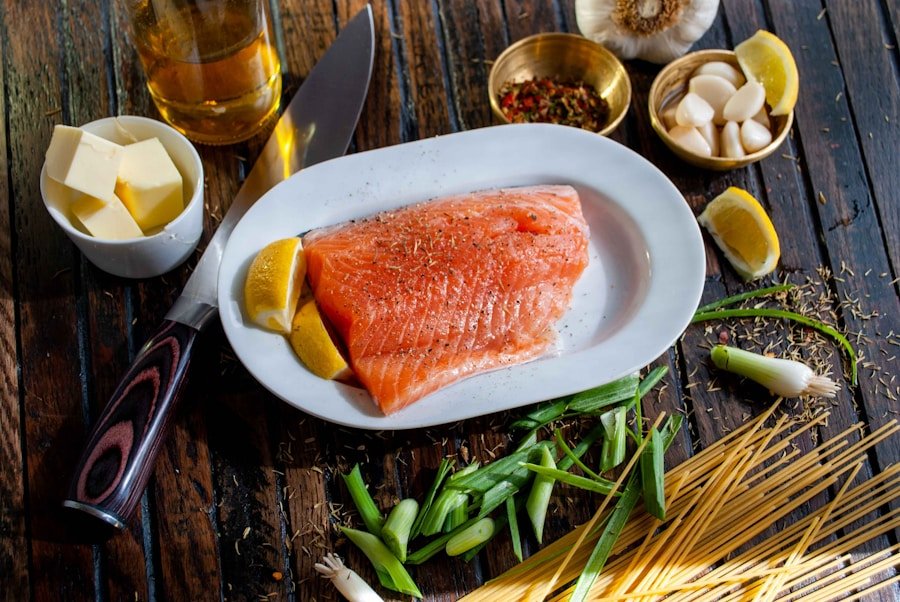The quest for effective weight management and fat loss has led many individuals to explore various dietary strategies. Among these, the concept of fat-burning foods has gained significant attention. These foods are believed to enhance the body’s ability to burn fat, either by boosting metabolism, increasing satiety, or providing essential nutrients that support overall health.
The idea is not merely about consuming specific items but rather about integrating a variety of nutrient-dense foods into one’s diet that can synergistically promote fat loss while ensuring that the body receives the necessary vitamins and minerals. Fat-burning foods often possess unique properties that can aid in weight management. For instance, they may require more energy to digest, thereby increasing the number of calories burned during the digestive process.
Additionally, many of these foods are rich in fiber, protein, or healthy fats, which can help regulate appetite and prevent overeating. Understanding the role of these foods in a balanced diet is crucial for anyone looking to optimize their health and achieve their weight loss goals. This article will delve into various categories of fat-burning foods, exploring how they function and how they can be effectively incorporated into daily meals.
Key Takeaways
- Introduction to Fat-Burning Foods: Certain foods can help boost metabolism and aid in weight loss.
- Lean Proteins for Increased Metabolism: Lean proteins like chicken, turkey, and fish can help increase metabolism and promote fat burning.
- High-Fiber Fruits and Vegetables for Satiety: Fruits and vegetables high in fiber can help keep you feeling full and satisfied, aiding in weight management.
- Healthy Fats for Energy and Satiety: Incorporating healthy fats like avocados and nuts into your diet can provide sustained energy and help control hunger.
- Spices and Herbs to Boost Metabolism: Adding spices like cayenne pepper and herbs like ginger can help boost metabolism and aid in fat burning.
Lean Proteins for Increased Metabolism
Lean proteins are a cornerstone of any fat-burning diet due to their thermogenic effect, which refers to the energy required for digestion, absorption, and metabolism of nutrients. Foods such as chicken breast, turkey, fish, legumes, and low-fat dairy products are excellent sources of lean protein. When consumed, these proteins not only help build and repair muscle tissue but also elevate the metabolic rate for several hours post-consumption.
This phenomenon is known as the thermic effect of food (TEF), which can account for a significant portion of daily calorie expenditure. Incorporating lean proteins into meals can also enhance feelings of fullness, reducing the likelihood of snacking on high-calorie foods later in the day. For example, a breakfast rich in protein—such as scrambled eggs with spinach or Greek yogurt with berries—can keep hunger at bay until lunchtime.
Moreover, studies have shown that diets higher in protein can lead to greater weight loss compared to those with lower protein content. This is particularly beneficial for individuals looking to lose fat while preserving lean muscle mass, which is essential for maintaining a healthy metabolism.
High-Fiber Fruits and Vegetables for Satiety

Fruits and vegetables that are high in fiber play a pivotal role in promoting satiety and aiding in weight management. Fiber-rich foods take longer to digest, which helps maintain a feeling of fullness for an extended period. Foods such as apples, pears, broccoli, and legumes are not only low in calories but also packed with essential nutrients that support overall health.
The soluble fiber found in these foods can also help regulate blood sugar levels by slowing down the absorption of sugar into the bloodstream, which is crucial for preventing energy crashes and cravings. Incorporating high-fiber fruits and vegetables into meals can be both enjoyable and beneficial. For instance, adding a variety of colorful vegetables to salads or stir-fries not only enhances flavor but also increases fiber intake significantly.
Smoothies made with spinach, kale, or berries can serve as a delicious way to boost fiber consumption while providing antioxidants and vitamins. Furthermore, research indicates that individuals who consume more fiber tend to have lower body weight and reduced risk of obesity-related diseases, making these foods an essential component of any fat-burning diet.
Healthy Fats for Energy and Satiety
| Healthy Fats Source | Energy Content (kcal per 100g) | Satiety Index |
|---|---|---|
| Avocado | 160 | 3.3 |
| Almonds | 576 | 3.5 |
| Olive Oil | 884 | 3.3 |
| Salmon | 206 | 3.2 |
Contrary to the misconception that all fats contribute to weight gain, healthy fats are vital for a balanced diet and can actually aid in fat loss when consumed in moderation. Sources of healthy fats include avocados, nuts, seeds, olive oil, and fatty fish like salmon. These fats provide essential fatty acids that the body cannot produce on its own and are crucial for various bodily functions, including hormone production and nutrient absorption.
Moreover, healthy fats are energy-dense, meaning they provide a substantial amount of energy per gram, which can be beneficial for those engaging in regular physical activity. In addition to providing energy, healthy fats contribute to satiety by slowing down digestion and promoting feelings of fullness. For example, adding a handful of walnuts or a drizzle of olive oil to a salad can enhance flavor while keeping hunger at bay.
Research has shown that diets rich in healthy fats can lead to improved weight management outcomes compared to low-fat diets. This is partly because healthy fats can help stabilize blood sugar levels and reduce cravings for unhealthy snacks. Therefore, incorporating moderate amounts of healthy fats into meals can be an effective strategy for those looking to burn fat while enjoying satisfying and flavorful dishes.
Spices and Herbs to Boost Metabolism
Spices and herbs not only enhance the flavor of dishes but also possess unique properties that can boost metabolism and promote fat burning. Ingredients such as cayenne pepper, ginger, cinnamon, and turmeric have been studied for their potential thermogenic effects. For instance, capsaicin—the active compound in cayenne pepper—has been shown to increase metabolic rate temporarily and promote fat oxidation.
Similarly, ginger has been linked to improved digestion and may help regulate blood sugar levels. Incorporating these spices into daily meals can be both simple and enjoyable.
Additionally, turmeric contains curcumin, which has anti-inflammatory properties that may support overall health and well-being. By experimenting with various spices and herbs in cooking, individuals can not only enhance the taste of their meals but also harness the potential fat-burning benefits these ingredients offer.
Green Tea and Coffee for Caffeine and Antioxidants

The Caffeine Boost
Green tea and coffee are two popular beverages that have garnered attention for their potential fat-burning properties due to their caffeine content and rich antioxidant profiles. Caffeine is known to stimulate the central nervous system, leading to increased energy expenditure and enhanced fat oxidation during exercise.
The Power of Green Tea
Green tea is particularly noteworthy because it contains catechins—powerful antioxidants that may further enhance fat burning by increasing metabolic rate. Research suggests that individuals who consume green tea regularly may experience greater weight loss compared to those who do not include it in their diet. Incorporating green tea into daily routines can be as simple as enjoying a cup in the morning or using it as a base for smoothies.
Moderate Coffee Consumption for Maximum Benefits
Similarly, coffee lovers can benefit from moderate coffee consumption while being mindful of added sugars or creamers that may counteract its health benefits.
Whole Grains for Sustained Energy
Whole grains are an essential component of a balanced diet that supports sustained energy levels while promoting fat loss. Unlike refined grains, whole grains retain their bran and germ layers, providing more fiber, vitamins, and minerals. Foods such as quinoa, brown rice, oats, and whole wheat bread are excellent sources of complex carbohydrates that release energy slowly into the bloodstream.
This slow release helps maintain stable blood sugar levels and prevents energy crashes that often lead to unhealthy snacking. Incorporating whole grains into meals can be both versatile and satisfying. For instance, starting the day with oatmeal topped with fruits or nuts provides a hearty breakfast that keeps hunger at bay until lunchtime.
Whole grain wraps filled with lean proteins and vegetables make for nutritious lunches that fuel the body throughout the day. Research indicates that individuals who consume whole grains regularly tend to have lower body weight and reduced risk of chronic diseases compared to those who primarily consume refined grains. Thus, making whole grains a staple in one’s diet can significantly contribute to effective weight management.
Conclusion and Tips for Incorporating Fat-Burning Foods into Your Diet
Incorporating fat-burning foods into your diet does not have to be overwhelming; rather, it can be an enjoyable journey toward better health and weight management. Start by gradually introducing lean proteins into your meals—consider grilled chicken salads or fish tacos as delicious options. Next, focus on adding high-fiber fruits and vegetables; aim for at least five servings per day by including them in snacks or smoothies.
Healthy fats should not be overlooked; try incorporating avocados into sandwiches or using olive oil as a dressing for salads. Experimenting with spices can also add excitement to your meals—consider adding ginger to stir-fries or cinnamon to your morning coffee. Finally, make green tea or coffee your go-to beverages while being mindful of portion sizes.
By understanding the role each category of food plays in promoting fat burning and overall health, individuals can create balanced meals that not only satisfy their taste buds but also support their weight loss goals effectively.
If you are looking to lose weight, incorporating the best foods for fat loss into your diet is essential. One article that provides valuable weight loss tips is
